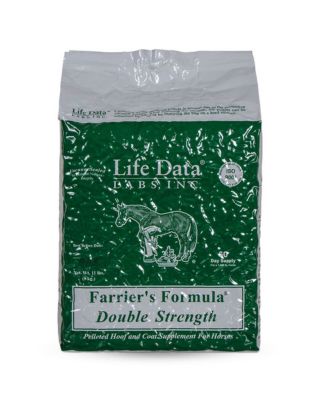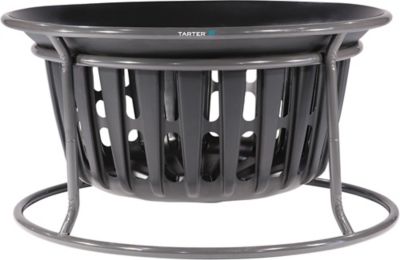Life Data Labs Farrier’s Formula Double Strength Horse Feed Bag, 11 lb.
Give your horse a treat they’ll be sure to love with the Life Data Labs Farriers Formula Double Strength Horse Feed Bag. Each bag of double strength horse feed contains an incredibly effective formula that works quickly. It promotes hoof health for all ages and sizes. This horse formula feed helps builds strong hoof connective tissue that only strengthens over time.
Give your horse a treat they’ll be sure to love with the Life Data Labs Farriers Formula Double Strength Horse Feed Bag. Each bag of double strength horse feed contains an incredibly effective formula that works quickly. It promotes hoof health for all ages and sizes. This horse formula feed helps builds strong hoof connective tissue that only strengthens over time.
- Each bag of double strength horse feed contains an incredibly effective formula that works quickly
- Promotes hoof health for all ages and sizes
- Strengthens hooves to prevent hoof wall problems that can be expensive to fix
- Thickens and strengthens soles for comfort
- Horse formula feed helps builds strong hoof connective tissue that only strengthens over time
- Helps develop a healthier hair coat, mane and tail
- Each bag is 11 lbs. and has enough supply to last 60 days
Ingredients
Dehydrated Alfalfa Meal, Soy Protein Concentrate, Lecithin, Yeast Culture Dehydrated, DL-Methionine, Hydrated Sodium Calcium Aluminosilicate, Biotin, Ascorbic Acid, Zinc Oxide, Basic Copper Chloride, Fenugreek Extract, Calcium Iodate.
Feeding Guide
Adult Horses Top dress or mix with regular feed. For each 1000 lbs (450 kg) of body weight feed one half measuring cup* (119 ml or 85 g) of product per day. * One half standard kitchen measuring cup (119 ml) will deliver 85 grams of product. Nursing Foals Feed 1/8 measuring cup (2 tablespoon, 20 ml or 21 g) per day. Farrier’s Formula Double Strength is doping free and can be safely fed to competition horses. One 11 lb bag is a 60-day supply for the average 1,000 lb. horse. Farrier’s Formula Double Strength is doping free and can be safely fed to competition horses. One 11 lb bag is a 60-day supply for the average 1,000 lb. horse.
- Nursing Foals Feed 1/8 measuring cup (2 tablespoon, 20 ml or 21 g) per day.
- Weanling to adults Feed at the predicted adult weight from the chart below.
Additional information
| Flavor / Scent | Alfalfa |
|---|---|
| Food Form | Pellets |
| Horse Life Stage | All Life Stages |
| Manufacturer Brand | Life Data Labs |
| Packaged Height | 10.38 in. |
| Packaged Length | 11.25 in. |
| Packaged Weight | 11.15 lb. |
| Packaged Width | 8.13 in. |
| Product Height | 10.4 in. |
| Product Length | 8.5 in. |
| Product Weight | 11 lb. |
| Product Width | 5.5 in. |
| Manufacturer Part Number | 21290126 |









by Rebecca
This formula works great to help my horses grow strong and healthy hooves! They are picky eaters and love the taste!
by Hart
Tractor supply asked me to review this product the week after I bought it and thats not really how supplements work. BUT! It comes highly recommended by my farrier, was in stock when I needed it, and at a good price after shopping around. It’s palatable and the horse happily eats it although he would likely eat anything. Hopefully by the next time I stock up I will see results to better review the product.
by Bell
I have a horse with some hoof problems and Farrier’s Formula helps keep his feet healthier. I actually use it on all four of my horses and not only are their feet healthier, too, all of them have beautiful thick shines coats and manes.